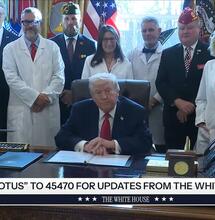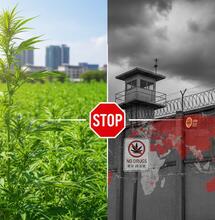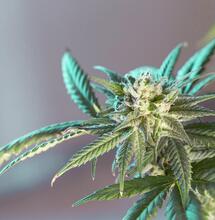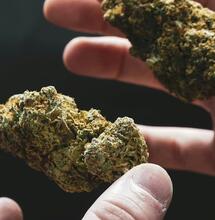It Took Half a Century, But U.S. Scientists Will Finally Have Better Access to Cannabis Plants for Research
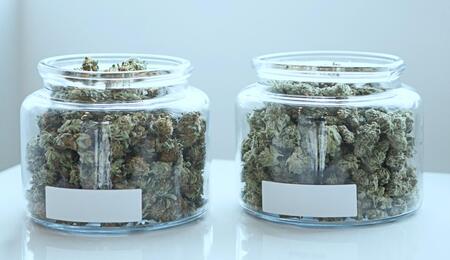
While domestic scientists will have more opportunities than ever to study cannabis, those interested to conduct research will still need a special license mandatory for work with Schedule 1 drugs.
It's no secret that cannabis research in the U.S. has stalled for decades due to federal restrictions. Until now, scientists have been allowed to use cannabis plants from a single domestic source for their research. This has been the case despite a majority of states in the meantime have introduced medical marijuana programs on their territories.
Since the late 1960s, researchers in the U.S. whose focus has been the cannabis plant were only allowed to use supplies from the growing facilities within the University of Mississippi. The National Institute on Drug Abuse (NIDA) has mediated the process. For many, such limiting access to cannabis material for research has resembled a huge setback — but finally, the federal government is having a change of heart. Better late than never.
The U.S. Drug Enforcement Administration (DEA) said last month in a statement that it's in the process of registering several different domestic cannabis operators to cultivate crops for medical and scientific purposes. "DEA is nearing the end of its review of certain marijuana grower applications, thereby allowing it to soon register additional entities authorized to produce marijuana for research purposes," read its announcement published May 14. With more manufacturers who will serve science, the U.S. will be able to up its game in cannabis research.
Hopefully, it will also accelerate studies on the health effects of the plant on various conditions that we know cannabis helps, but where more research is needed to determine how exactly it helps. New research could also translate to identifying the best dosages per specific health condition or the ideal cannabinoid combination, by which any side effects are greatly avoided. Last but not least, it could also mean developing new and more effective drugs.
Despite it has been a promising step from the DEA, to make it clear immediately — the decision doesn't put an end to the ongoing conflict between federal and state laws. The move will simply offer researchers a new, federally sanctioned pipeline for more products and strains of cannabis. The science community has welcomed the change. "This is a momentous decision," Rick Doblin, executive director of the Multidisciplinary Association for Psychedelic Studies (MAPS), told National Public Radio.
"This is the last political obstruction of research with Schedule 1 drugs," Doblin said.
Drugs classified as Schedule 1 represent the most restrictive class of controlled substances, with the federal government labeling it as "drugs with no currently accepted medical use." Marijuana and THC are still considered Schedule 1 drugs in the U.S., although one-third of Americans presently live in a state where recreational cannabis is legal. And more than half of the population lives in places where medical cannabis is legal, too.
While legalization has been advancing reasonably well in the last couple of years, this hasn't been the case with scientific research. As cannabis has remained illegal at the federal level, scientists have not been allowed to use cannabis samples from state-licensed dispensaries. In some cases, scientists have resorted to importing cannabis from overseas countries, which is legal but in itself a problematic and tiring process.
"The NIDA monopoly has primarily been why we have medical marijuana in the states, but we don't have medical marijuana through the FDA," said Doblin. "It's a fundamental change that we can now have drug development with domestic supplies." Dr. Steve Groff, founder and chairman of Groff North America, told National Public Radio, "We'll see a decade of more of explosive cannabis research and potential new therapies." His is one of three companies that publicly announced obtaining preliminary approval from the federal government to cultivate cannabis for research.
By the end of next year, Groff anticipates his company will be sourcing up to 5,000 pounds of cannabis per year, offering researchers a "full menu of customizable options."
"There's thousands of different cannabis varieties that all have unique chemical profiles and produce unique clinical effects, but we didn't have access to that normal diversity," also said Dr. Sue Sisley, a cannabis researcher and president of the Scottsdale Research Institute, another candidate that is pending DEA approval for manufacturing cannabis for science research.
Already in 2016 has the federal government signaled a policy change that would favor new cultivators, but the delays to implement the policy have been tremendous. Some interested manufacturers have sued the federal government over these delays.
Even now, when research in the U.S. is finally opening up, some constraints will still remain in place, at least for a little bit longer.
While domestic scientists will have more opportunities than ever to study cannabis, those interested to conduct research will still need a special license mandatory for work with Schedule 1 drugs. Not to mention that securing funds to carry out cannabis studies are another challenge. Hopefully, it all changes for the better as the legal picture improves and as the nation acknowledges the benefits of top-notch cannabis research.
